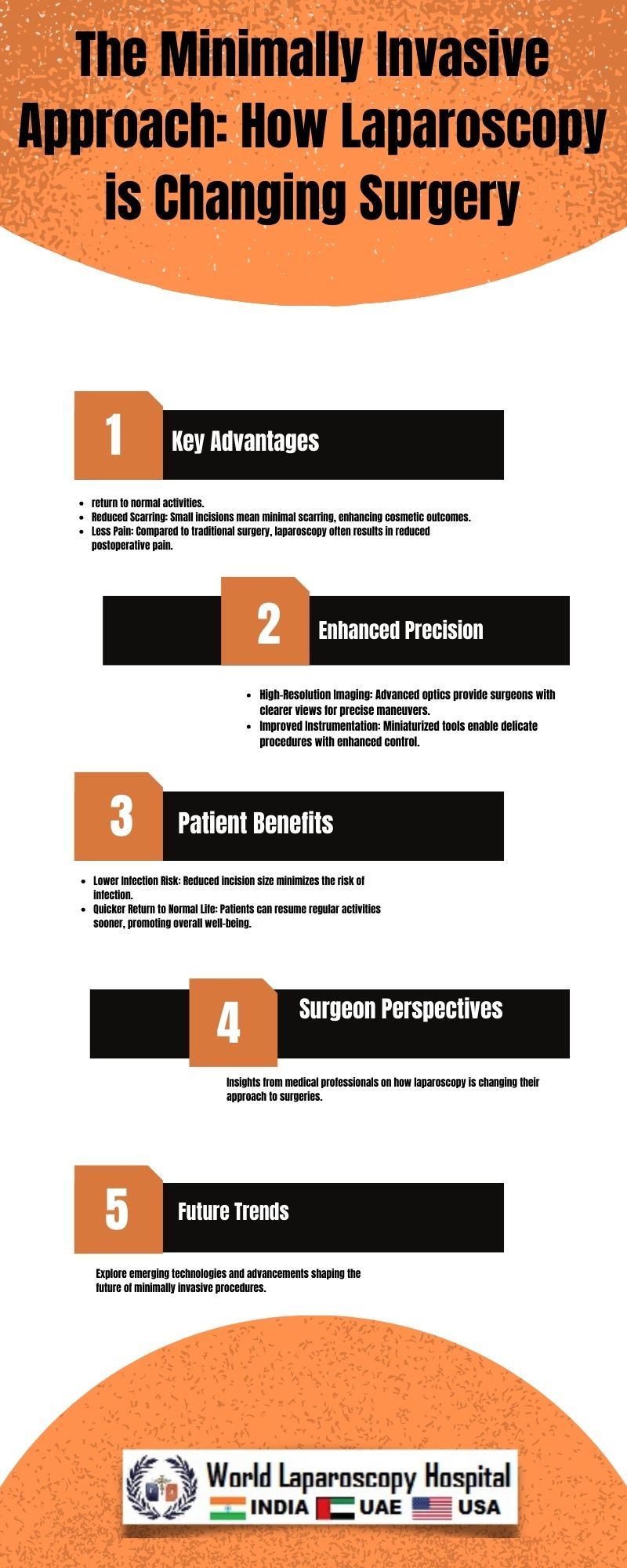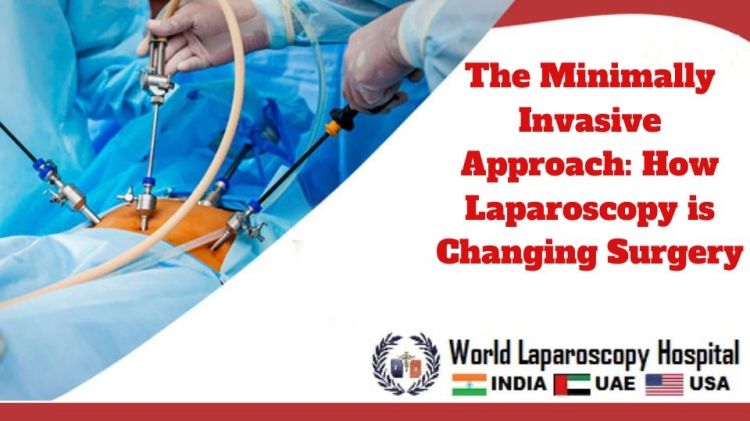The Minimally Invasive Approach: How Laparoscopy is Changing Surgery
Introduction
In the ever-evolving realm of medical science, the advent of minimally invasive surgery has been a game-changer, with laparoscopy standing at the forefront of this revolutionary approach. Traditionally, surgery often meant large incisions, extended recovery periods, and significant postoperative discomfort. However, the emergence of laparoscopy has ushered in a new era, offering patients a less invasive and more efficient alternative. In this comprehensive exploration, we delve into the various aspects of laparoscopy, examining its history, techniques, applications, benefits, and the impact it has on the field of surgery.

Historical Evolution of Laparoscopy
To appreciate the significance of laparoscopy, it is essential to trace its historical roots. The concept of minimally invasive surgery dates back to the early 20th century, with the development of rudimentary endoscopic instruments. However, it wasn't until the 1980s that laparoscopy gained prominence as a viable surgical technique. Pioneering surgeons experimented with small incisions and specialized tools, laying the foundation for the minimally invasive revolution that would follow.
Techniques and Instruments in Laparoscopy
Laparoscopy involves the use of a laparoscope, a thin tube equipped with a light and camera, which is inserted through small incisions. The surgeon then views the internal organs on a monitor, guiding miniature surgical instruments to perform the procedure. The meticulous coordination between the surgeon and the advanced laparoscopic tools is crucial for success. Over the years, technological advancements have led to the development of more sophisticated instruments, enhancing the precision and capabilities of laparoscopic surgery.
Applications Across Medical Specialties
The versatility of laparoscopy extends across various medical specialties, making it a preferred choice for an array of procedures. In general surgery, it is commonly employed for appendectomies, cholecystectomies, and hernia repairs. Gynecologists utilize laparoscopy for hysterectomies and ovarian procedures, while urologists apply it in the treatment of kidney conditions and prostate issues. Additionally, laparoscopy has found applications in orthopedic, cardiovascular, and even pediatric surgeries, showcasing its broad scope and adaptability.
Advantages of Laparoscopic Surgery
The shift towards laparoscopy is fueled by its myriad advantages over traditional open surgery. One of the primary benefits is the reduced trauma to surrounding tissues due to smaller incisions, leading to diminished postoperative pain. Patients undergoing laparoscopic procedures experience shorter hospital stays, quicker recovery times, and lower rates of infection. The cosmetic aspect is also noteworthy, as the minimal scarring associated with laparoscopy contributes to improved patient satisfaction.
Patient-Centric Benefits
The impact of laparoscopy extends beyond the operating room, significantly benefiting patients on a personal level. Reduced postoperative pain allows for a more comfortable recovery, enabling individuals to resume their daily activities sooner. The shorter hospital stays associated with laparoscopic procedures contribute to decreased healthcare costs and alleviate the burden on healthcare facilities. Patients also appreciate the aesthetic advantage of minimal scarring, fostering a positive perception of the surgical experience.
Challenges and Considerations
While laparoscopy offers numerous advantages, it is essential to acknowledge the challenges associated with this approach. The learning curve for surgeons transitioning from traditional methods to laparoscopy can be steep. Additionally, not all procedures are suitable for the minimally invasive approach, and certain complex cases may still require open surgery. Balancing the benefits and challenges is crucial to ensuring optimal patient outcomes and maintaining the integrity of surgical practices.
Technological Innovations and Future Trends
The field of laparoscopy continues to evolve with ongoing technological advancements. Robotics have entered the surgical arena, providing surgeons with enhanced dexterity and precision. Augmented reality and virtual reality technologies are being explored to further improve visualization during laparoscopic procedures. As technology progresses, the future holds the promise of even more refined and specialized tools, expanding the capabilities of laparoscopic surgery.
Global Impact and Accessibility
Laparoscopy's impact is not limited to developed nations; its benefits are making a significant difference in healthcare accessibility globally. In resource-limited settings, where open surgery may pose greater challenges, laparoscopy offers a more feasible and effective solution. Training programs and initiatives aimed at disseminating laparoscopic skills are vital for ensuring that the benefits of this approach reach diverse populations around the world.
Conclusion
In conclusion, laparoscopy has undeniably transformed the landscape of surgery, offering a less invasive, more patient-friendly alternative to traditional open procedures. From its historical roots to the present day, laparoscopy has witnessed continuous evolution, with technological advancements propelling its widespread adoption across medical specialties. The benefits of reduced trauma, quicker recovery, and enhanced patient satisfaction make laparoscopy a cornerstone of modern surgical practices. As the journey of laparoscopy unfolds, the ongoing quest for innovation promises to further refine and expand the possibilities of this revolutionary surgical approach.
